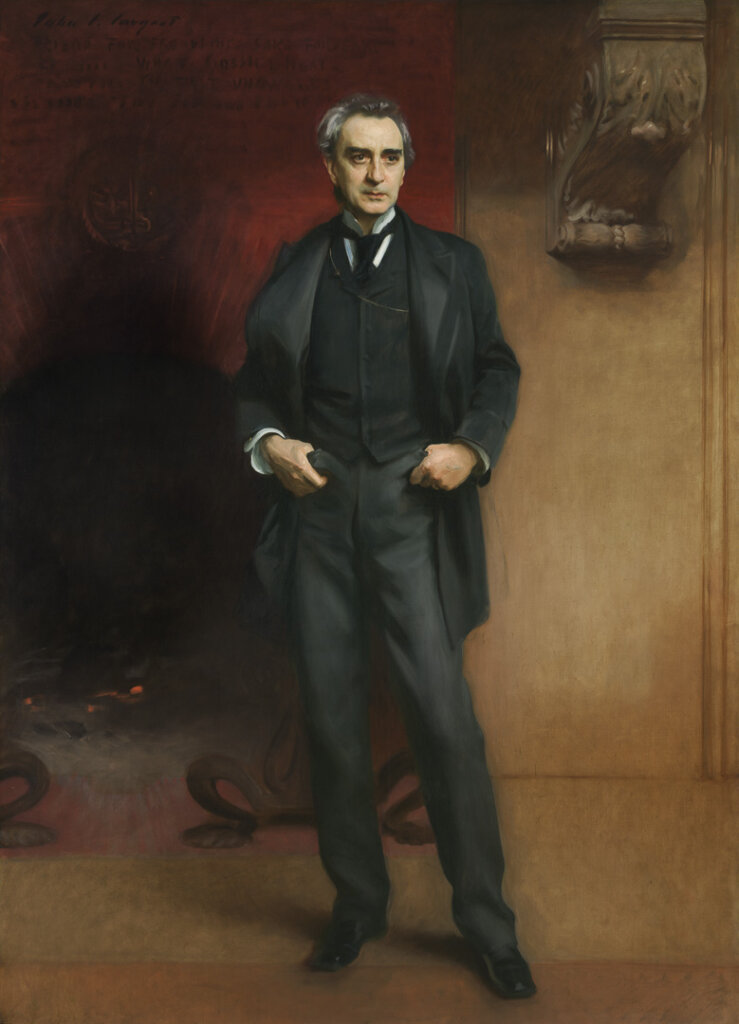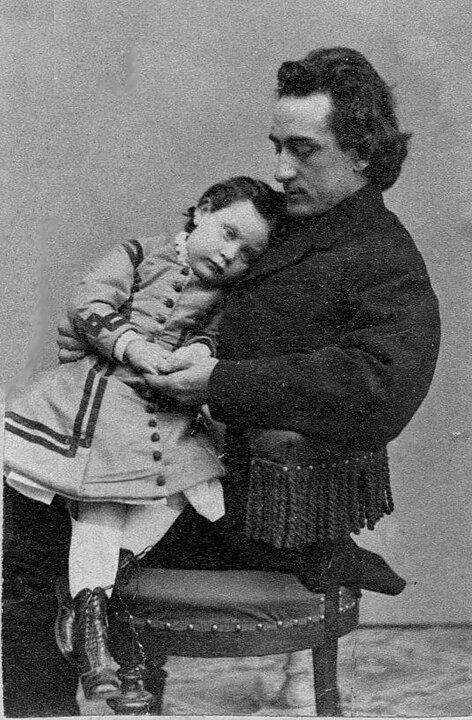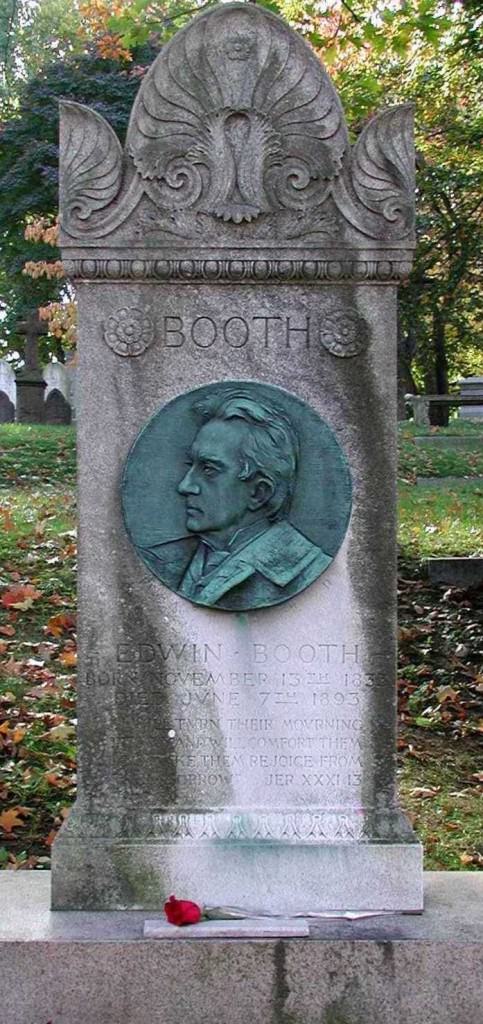
Edwin Booth (1833-1893)
Shakespearean Stage Actor
Edwin Booth, esteemed Shakespearean actor, was born in Maryland on November 13, 1833.
Booth’s first role was the minor part of Tressel in Richard III on September 10, 1849 at the Boston Museum. He spent the next several years traveling and performing, cultivating his confidence on stage. In 1857 he returned to Boston to appear as Sir Giles Overreach, which earned him recognition.
Booth married Mary Devlin, a young actress, in 1860. She had played Juliet to the Romeo of actress Charlotte Cushman. Mary retired from the stage after the marriage, and gave birth to their daughter, Edwina, in 1861. Mary died in 1863, causing Booth to retire from the stage and begin managing the Winter Garden. In 1864-5, he returned to the stage to play the role of Hamlet for 100 nights, a famous run in his career. Booth retired again following the April 14, 1865 assassination of President Abraham Lincoln by his brother John Wilkes Booth. He feared the public response and worried that theatergoers would blame him for his brother’s actions. Yet when he returned to the stage the following year, he was met by a loyal audience.

Booth spent the next several years cultivating his stage presence, appearing in numerous Shakespearean roles, and building Booth Theater. He established the Player’s Club in Gramercy Park, which still exists today as a gathering place for actors and non-actors to share ideas and come to know each other beyond the theater. Booth elevated the theater to a place of “cultivation, enlightenment, and refinement.” Among the actor’s friends were John Singer Sargent, who painted Booth’s portrait; Thomas Bailey Aldrich (Lot 6109 Grapevine Path), who composed a poem in his honor; and Julia Ward Howe.

Edwin Booth is buried beside his first wife, Mary Devlin Booth, and his two children, Edgar and Edwina, in Lot 3281 on Anemone Path. His monument, designed by architect Stanford White, features a bronze bas relief of Booth, engravings of the masks of tragedy and comedy, and lines from Shakespeare.

Footnotes:
Adapted from the research of Judy Jackson and Laura M. Gosman, as published in Mount Auburn Cemetery’s Person of the Week: Edwin Booth, 2001.
